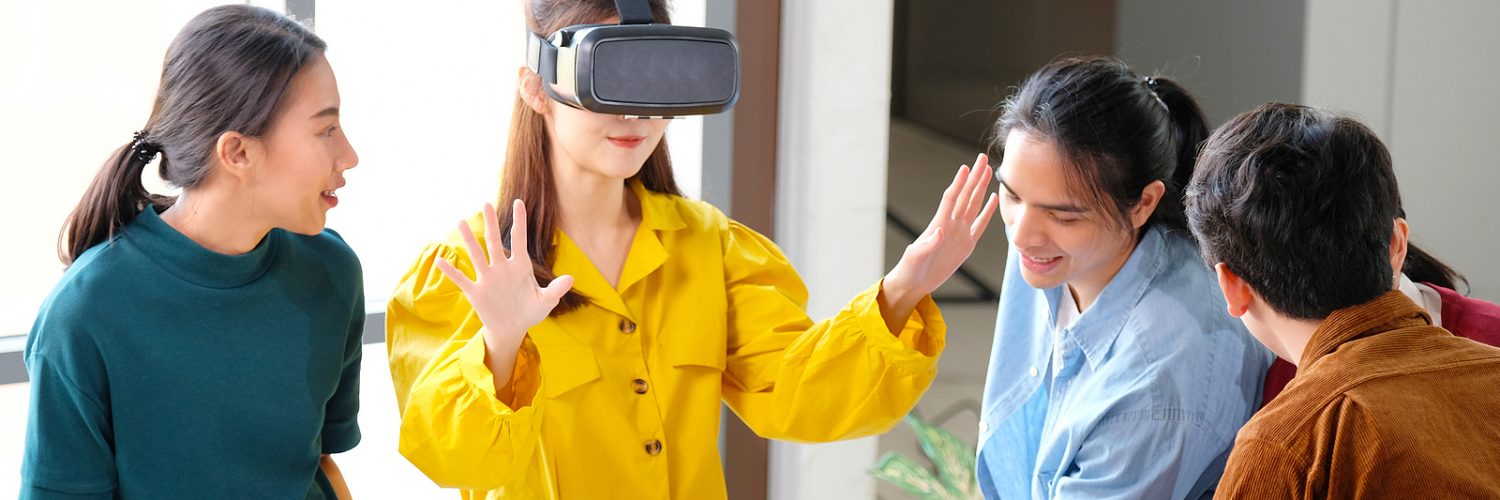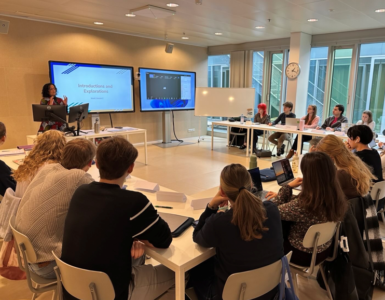by Wybren Bosma & René Janssen, Lepaya & Parable.
You walk into your boss’s office planning to ask for a raise. As you sit down the knot in your stomach tightens. Nervously you mutter your first words but after a few seconds, you manage to find your footing. You lay out your logic, make your request, and look at her expectantly. Without blinking an eye, she tells you no. You don’t know how to respond. Was it something you’ve said? Frustrated you take off your headset. The communications coach smiles at you encouragingly. He explains that your tone of voice and body language failed to convey urgency. Invigorated by his words you put your headset back on and re-enter her office.
Leveraging Virtual Reality (VR) for learning and development sounds like a million-dollar idea. But is it truly as impactful as we all hope it to be? Today, innovation is more disruptive than ever, changing the nature of work fundamentally and at a pace we’ve never seen before. Over 80% of CEOs worry about the need for strengthening their team’s capabilities. What we need are new solutions that help us to address the huge re- and up-skilling requirements of the workforce. Solutions with material impact that demonstrably and sustainably change behavior at scale. Could VR be such a solution? Or is it just a cool gimmick? Research done by Lepaya (a European L&D training provider) and Parable (a Dutch VR studio) shows that VR can measurably enhance the learning effectiveness of soft skill training programs. A promising result worth exploring.
The conducted study consisted of two separate experiments. In each of them the learning module was the same: the Rose of Leary – a framework for understanding and influencing behavior. The first experiment involved 77 participants divided into four groups and compared different modalities in a standalone setting. Group 1 got a thirty-minute learning session in VR. Group 2 got the exact same content but interacted with it on a regular 2D monitor instead of through a VR headset – an experience comparable to an immersive e-learning module. Group 3 participated in a sixty-minute facilitator-led video conferencing session. Group 4 got the same session but conducted face to face. The second experiment was set up to compare a face-to-face instructor-led session to a combination of a face-to-face session and a VR module. In this experiment, the first group (12 people) participated in a three-hour face-to-face session led by a facilitator and an actor. The second group went through a thirty-minute VR experience followed by one hour face-to-face with a professional actor (4 people at a time). Before and after all sessions, Lepaya surveyed all participants and asked them to self-rate their proficiency on various dimensions.
The research resulted in four main conclusions. First, VR was proven to be the most effective way to teach people how to influence behavior. Compared to the skill increase measured for the participants that joined one of the facilitator-led sessions, VR participants reported a skill increase that was 85% larger and 2D participants an increase that was 58% larger. The significant difference in effectiveness between facilitator-led and VR/2D could be explained by the fact that improving in this particular skill requires practice. An individualized VR or 2D module enables every participant to go through the entire exercise with full attention and without anywhere to hide. In contrast, facilitators leading group exercises have to divide their time and attention which could allow participants to, at times, disengage. Further research should be conducted to test this hypothesis and investigate the power of practice through VR for other learning goals.
Second, a 1.5-hour session consisting of a combination of VR and facilitator-led is 1% more effective than a 3-hour fully facilitator-led session. A remarkable result given the shorter duration. To understand these results, the researchers took a closer look at the two elements of the module: understanding the theory and practicing in a real-life setting. The experiment showed that the participant’s comprehension of the framework was as good after thirty minutes in VR as it was after ninety minutes with a facilitator. It also showed that the VR module prepared them better for the interaction with the actor. The researchers attributed these results partly to the same dynamic as discussed as part of the first conclusion: the individualised and immersive VR experience was more engaging than a facilitator-led group session. Additionally, they recognised that because the VR module contained exercises similar to the role play with the actor afterwards, the participants were familiar with this type of interaction, which was not the case in a facilitator-led session. Again, this hypothesis should be tested in follow-up studies. In terms of impact, the actor-led session, allowing participants to apply the theory to their own real-life cases, was the main determinant for success.
Third, VR outperformed 2D on all dimensions, e.g., impact, immersivity, interaction with the virtual characters, and intuitiveness. This does not necessarily mean 2D shouldn’t have a place in future training curricula. The technology is still easier to produce and distribute, making 2D digital content accessible to more people. A key prerequisite the researchers identified for both VR and 2D was the availability of a private workstation. As soon as participants saw and/or heard others they reported feeling distracted and somewhat inhibited.
Fourth, there was one element where VR did not (yet) outperform facilitator-led sessions (face-to-face or through video conferencing). Facilitator-led sessions were 45% more effective than VR and 81% more effective than 2D at teaching people how to use the Rose of Leary to recognize the attitude and stance of others. This could be because recognising behaviour involves interpreting subtleties in posture, tone of voice, and facial expression, all of which are more difficult in an animated model. The researchers also found that the degree to which the animations resembled real people mattered for the immersivity of the experience. Models with a close to lifelike appearance seemed more distracting and less effective than virtual conversationalists with a less realistic representation. Further study is required to fully understand the link between visual accuracy and effectiveness. With rapid developments in 3D modelling and processing, increasingly life-like models that display all intricacies of posture and expressions will become the norm within the next few years.
Overall, Lepaya’s and Parable’s joint research proves that already today VR is a valuable addition to soft skill training curricula; and with the rapid advancements in software, hardware, and conversational AI, the effectiveness will only rise over time. That means VR just might be the silver bullet that is going to help us address the upskilling task that is keeping CEOs up at night.

Authors
Wybren Bosma (VR Entrepreneur)

René Janssen (EdTech Entrepreneur)














